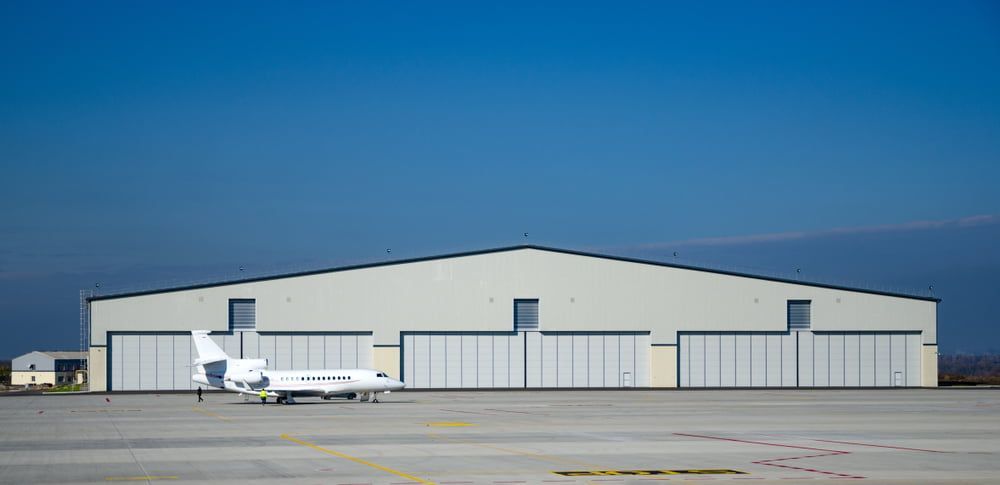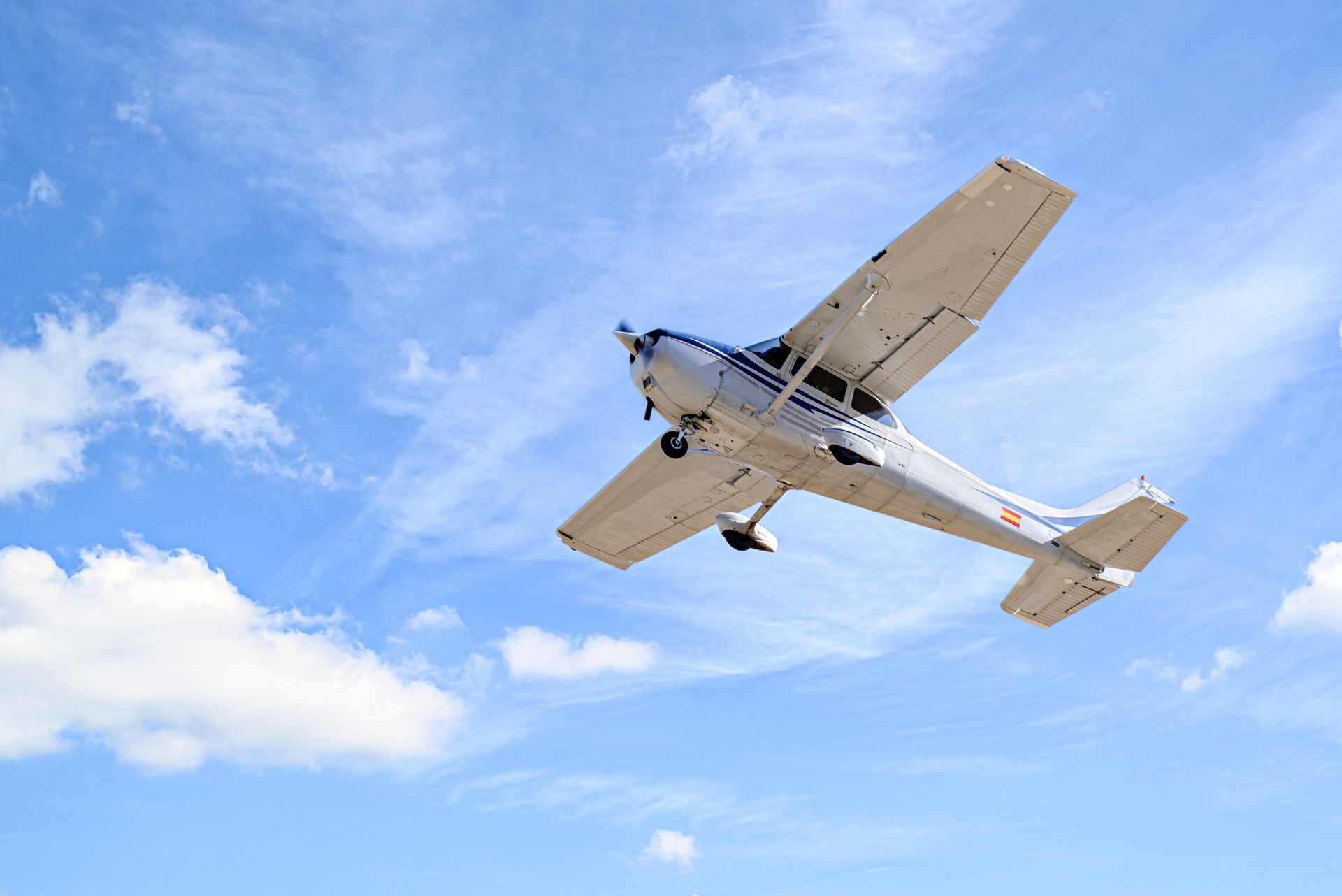Share this Article:

When winter weather comes knocking, it’s common for pilots to put their airplanes into storage and avoid flying during the cold, snowy season when conditions become more challenging.
However, properly storing an aircraft can be more challenging than you may initially think. In other words, pilots have options. In this post, we’ll discuss key considerations for long-term aircraft storage and why a hangar is often the best storage option for pilots. Read on to learn more:
When to Leave Your Aircraft in Long-Term Storage
Like we said in the beginning, one of the most popular times for pilots to store their aircraft is during the winter months when flying becomes more challenging in cold weather conditions. Simply put, you should consider storing your aircraft if it’s not going to be used for any extended period.
Choosing the Right Storage Environment
The right storage environment is crucial to protecting the plane and helps ensure that there’s less work to do to get it operational again when you’re ready to take it back to the skies. The ideal storage environment is temperature-controlled. Think of a consistent 60-75 degrees Fahrenheit with 60-65 percent humidity. It should also be clean and free of excessive dust and debris. Ideally, the aircraft is even supported on jacks to take the load off of any tires or other mechanical equipment. It’s why many pilots opt to rent a hangar to store their aircraft.
Benefits of Renting a Hangar
There are a variety of benefits to renting a hangar for aircraft storage. In addition to meeting the cleanliness and temperature control factors that we discussed in the previous section, hangars also offer a variety of other benefits for the storage of aircraft. These include:
- Protection from outside weather: Aside from extreme cold and heat, hangars also protect aircraft from the sun’s UV rays and inclement weather like sleet and hail that could damage its exterior and impact its performance. You don’t want to have to file an insurance claim for storing the aircraft.
- Safety and security: Hangars tend to offer advanced security measures such as access control, CCTV surveillance, on-site 24/7 security, and alarm systems to help keep your aircraft safe while it’s parked.
- Capacity flexibility: Hangars are not one-size-fits-all. Pilots can rent a hangar based on the size of their aircraft. Hangars tend to be available in sizes ranging from small (20 x 40 feet) to medium to large hangars that extend well beyond 40 x 80 feet in size.
Long-Term Aircraft Storage Checklist
If you’re planning to store your aircraft for an extended period, there’s a lot more work involved than simply parking it in a hangar or other location. To properly care for the aircraft while it’s parked and ensure it’s in good condition when you’re ready to fly it again, there’s a checklist that you should be following before you go to store it. It all starts with a thorough assessment.
Assessing the Condition of Your Aircraft
When an aircraft is stored, it should essentially be in a “ready to fly” condition following inspection . If it’s not, measures should be taken to ensure that it does reach this status. Much of this can be carried out by thoroughly preparing the aircraft for storage.
Storage Preparation
In addition to removing the batteries and taking care of some other routine preparation, you’ll want to specifically address the following before putting your aircraft in storage:
- Change Oil: Don’t wait until you remove the aircraft from storage to change the oil. Changing it before it goes into the hangar will ensure that any grime and other contaminants are removed from the aircraft. These contaminants may lead to rusting, corrosion, and other issues.
- Prepare Spark Plugs: Spray any spark plug holes with a preservative oil mix to ensure that they aren’t damaged during the winter. Doing this will help preserve them so that they remain in good working order when it’s time to fly again. Spark plugs may seem like a minor component, but they’re an important one.
- Cover Exterior: Even if you’re storing a plane in a covered hangar, you should still work to cover parts of the aircraft that you can. Parts like the prop blades, tail, windows, and more should be covered to further minimize the risk of any damage to such surfaces.
- Keep Fuel Tank Full: If you keep the aircraft’s fuel tank full, you’ll help reduce the risk of condensation that builds in the fuel tank and can wreak havoc on an aircraft’s engine and overall operation. Consult with the manufacturer to determine an adequate amount of fuel to keep in the tank.
Maintenance During Storage
You shouldn’t just store and then forget about your aircraft until it’s time to use it again. To best care for your aircraft, you should regularly maintain it throughout the time it’s stored as well. Some maintenance to consider include:
- Routine checks on landing gear
- Maneuvering it a third of a turn so the tires turn. This prevents flat spots and uneven bearings.
- Monitoring shock and strut pressure
- Keeping tires properly inflated
Why Choose an FBO for Long-Term Storage
FBOs are often the best option for long-term storage due to the variety of benefits they offer pilots and aircraft owners. For starters, you’re renting an FBO , so you’re not paying out the cost of buying and maintaining a hangar. Another big benefit is that FBOs have on-site staff to ensure the hangar is secure and to help service the aircraft for the time it’s parked. Restrooms, lounges, dining areas, and other amenities are also value-added benefits of an FBO.
Finally, many FBOs offer fuel discounts or credits to help pilots save money when they’re ready to fly again.
Contact J.A. Air Center Today
For more information on long-term storage options for your aircraft and to learn more about why an FBO is often the best choice for such storage, contact J.A. Air Center today.




